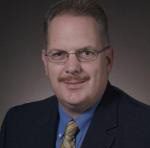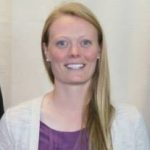This week I am pleased to have as my guest writer, Dr. Thomas H. Paulsen, Assistant Professor in the Department of Agricultural Education and Studies at Iowa State University. Dr. Paulsen has extensive experience in school-based agricultural education. He served as an agriculture instructor at Lynnville-Sully High School from 1987-1992 and Carroll High School from 1992-2008. He coordinates ISU’s Agriculture and Life Sciences Education program where he works closely with student teachers, cooperating teachers, and members of the School of Education.
Finally, a Formal Conservation Curriculum for Agricultural Education
Precision soil conservation is a topic familiar to most in the agriculture and environmental industries. However, far too little buzz happens in the classroom with regards to precision soil conservation. As a high school agriculture education teacher, I was always looking for high quality curriculum and partnerships in the community to help implement it. One of the high areas of need for me, as well as for teachers today is in the area of precision soil conservation. As with any other subject or content area, it is most important to start the learning at a young age. So what better place to implement precision soil conservation than in our Iowa classrooms, preparing students before they ever even hit the playing field?
Working as a part of a grant funded by the USDA, as well in partnership with Ball State, and the South Fork Watershed, a team of educators and Iowa State University graduate student Taylorann Clark completed a teacher needs assessment and developed a three-to-four week precision soil conservation curriculum. This curriculum was pilot tested at five schools within the South Fork Watershed in north central Iowa. The teachers who initially pilot tested the curriculum in their agricultural education classrooms attended a three-day training in order to grasp the concepts of precision soil conservation, as well as gain hands-on experience with online soil conservation tools.
After pilot testing, the curriculum was revised and shared with over 60 Iowa Agricultural Education teachers at their annual summer conference. These teachers have been given the curriculum to utilize at no cost. Some teachers have agreed to be a part of a continuing study, which will help with data collection and curriculum revision. Those who have been involved in the development process have high hopes that this curriculum will reach all agricultural education teachers in Iowa. It is also our goal that this curriculum will help build and support a relationship between the local agricultural education programs and community resource professionals (i.e. soil conservationists, agronomists, Soil & Water Conservation board members, etc.).
Six lessons comprise the curriculum. All lesson plans are student centered while, Power Point presentations, and accompanying activities were designed to be modified to meet the needs of local community. The first lesson introduces soil erosion and the main types of soil erosion. The second and third lessons are designed to help students understand factors that affect and practices which help to control soil erosion. Lesson four is based upon the effects soil erosion has on water quality. Lesson five requires the students to compare specific conservation planning technology, as well as develop their own new conservation technology, based upon what they have previously learned in the curriculum. Finally, the curriculum culminates with hands on experience building ponds and basins, and utilizing the online conservation tools.
The ultimate goal of this curriculum is to encourage students to spread awareness throughout their community through a final community ‘field day’. If you are a soil and water professional interested in helping your local youth better understand the importance of soil and water conservation, contact your local agriculture education teacher and determine if they have the curriculum. If not, encourage them to contact me. Together we can make a difference for our most valuable resources—our youth, our soil, and our water!
 |
Dr. Thomas Paulsen Assistant Professor of Agricultural Education Iowa State University tpaulsen@iastate.edu |
 |
Ms. Taylorann Clark Agricultural Education Instructor/FFA Advisor OABCIG High School tclark@oabcig.org |
 A new data layer for precision agriculture… that is publicly available
A new data layer for precision agriculture… that is publicly available
I would like to thank the team at ISU for helping to coordinate this activity, and especially Mr. Buman for helping to get this technology and training into the the hands of my students. I look forward to improving my own proficiency with the programs now available to us. Thanks again for helping to improve and modernize soil conservation technologies.